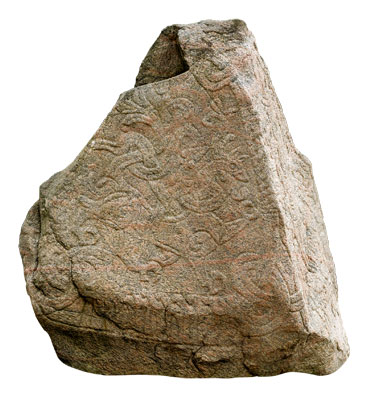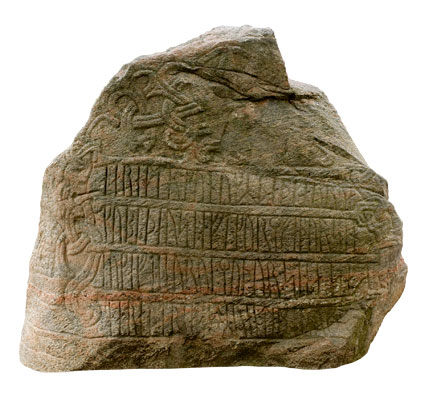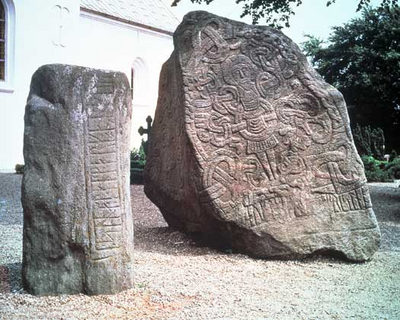The Jelling Stone

Around the year 965 King Harald Bluetooth erected the large rune stone in Jelling. The stone was raised in memory of King Harald’s parents, Gorm and Thyra. The inscription on the stone also gives an account of Harald’s achievements. He unified Denmark and made the Danes Christian. On one side of the stone Christ can be seen and on the other an animal with a snake coiled around it. The image of Christ is the oldest example from Scandinavia.

"King Harald ordered these kumbls made in memory of Gorm, his father, and in memory of Thyra, his mother; that Harald who won for himself all of Denmark and Norway and made the Danes Christian"
The large rune stone at Jelling is often called “Denmark’s birth certificate”, because Denmark is named in the inscription and also because the stone is a clear material proof of the change in religion. However, in recent years many metal items which are identifiably Christian have been found using metal detectors. We must therefore assume that before the “official” adoption of Christianity in Denmark the country was influenced by Christian currents and that some of the inhabitants must already have been Christian when Harald Bluetooth erected the rune stone at Jelling. For example, we know that the Danish King Harald Klak, together with more than 400 of his retinue, was baptized in Mainz in 826. The baptism took place in the presence of the Frankish Emperor Louis the Fair.



